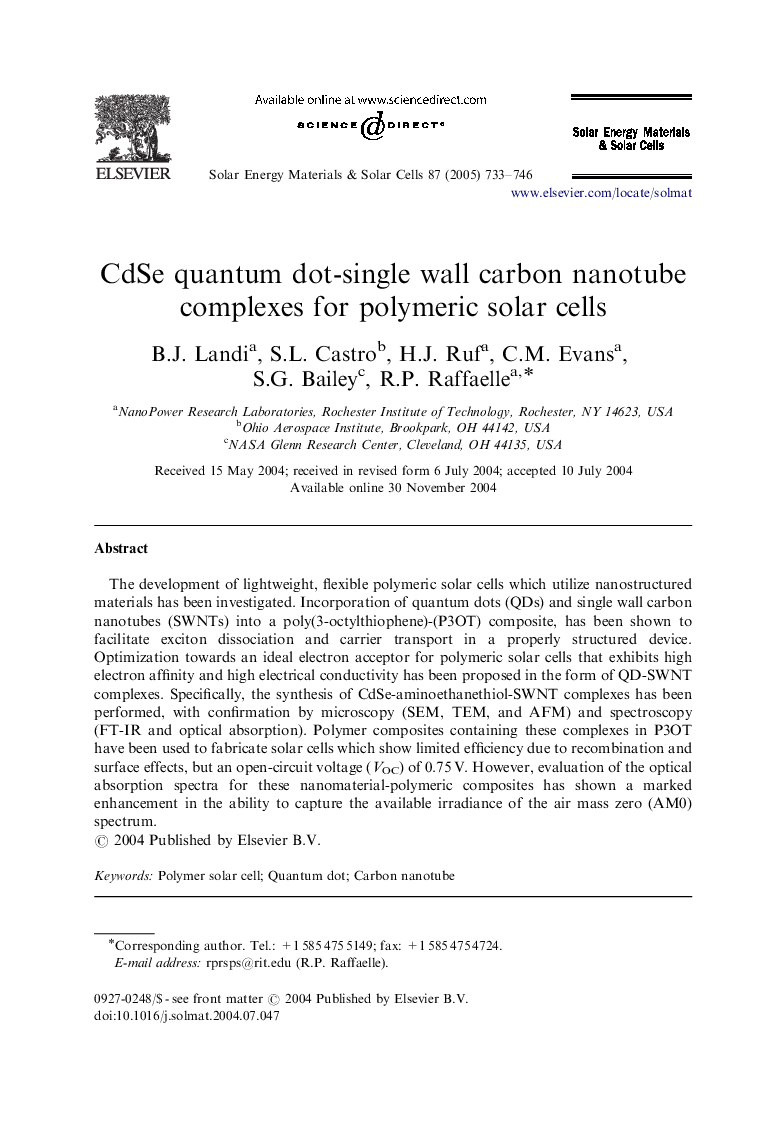| Article ID | Journal | Published Year | Pages | File Type |
|---|---|---|---|---|
| 9618718 | Solar Energy Materials and Solar Cells | 2005 | 14 Pages |
Abstract
The development of lightweight, flexible polymeric solar cells which utilize nanostructured materials has been investigated. Incorporation of quantum dots (QDs) and single wall carbon nanotubes (SWNTs) into a poly(3-octylthiophene)-(P3OT) composite, has been shown to facilitate exciton dissociation and carrier transport in a properly structured device. Optimization towards an ideal electron acceptor for polymeric solar cells that exhibits high electron affinity and high electrical conductivity has been proposed in the form of QD-SWNT complexes. Specifically, the synthesis of CdSe-aminoethanethiol-SWNT complexes has been performed, with confirmation by microscopy (SEM, TEM, and AFM) and spectroscopy (FT-IR and optical absorption). Polymer composites containing these complexes in P3OT have been used to fabricate solar cells which show limited efficiency due to recombination and surface effects, but an open-circuit voltage (VOC) of 0.75Â V. However, evaluation of the optical absorption spectra for these nanomaterial-polymeric composites has shown a marked enhancement in the ability to capture the available irradiance of the air mass zero (AM0) spectrum.
Related Topics
Physical Sciences and Engineering
Chemical Engineering
Catalysis
Authors
B.J. Landi, S.L. Castro, H.J. Ruf, C.M. Evans, S.G. Bailey, R.P. Raffaelle,
